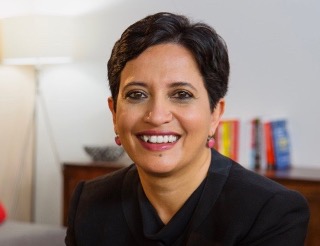outsourcing
Outsourcing: Vivek Chopra of Computer Sciences Corp. (Part 8)
By guest author Tony Scott
A Dialogue on Building a Global Culture
Tony: So, do you think that companies below the size of Infosys, Tata, CSC and others are really going to a multinational and global approach on their teams? I think if you go one level below, it’s very difficult or even impossible for many Indian and Chinese companies to do that. One of the things I see is that the boards and top leadership teams of the majority of the major Indian or Chinese companies are not very diverse. There are few exceptions, but if you don’t have a multicultural profile at the top, then you aren’t likely to get that throughout the entire organization. >>>
Indian Outsourcers Facing Globalization Challenges
Recent research reports by Forrester predict 9.3% growth in IT spending for the current year. The improved market conditions are resulting in stiffer competition among the Indian players for quality resources. Attrition in the segment has increased despite most companies offering 12%–14% offshore and 2%–4% onsite salary increments. Companies are trying to retain their staff by offering equity-based incentives, offcycle increments and bonuses, retention bonuses, and promotions. To add to their concerns, the rupee remained strong against the dollar, Europe’s recovery is slower than anticipated, and the ten-year tax holiday is coming to an end. The Indian IT players are in for a tough season ahead. >>>
Outsourcing: Vivek Chopra of Computer Sciences Corp. (Part 7)
By guest author Tony Scott
Global Challenges to India’s Dominance in Outsourcing – Is China a Threat?
Tony: I am interested to know your opinion on how this will shake out in the future. You have the perspective of working within both non-Indian and Indian outsourcing companies –what is your take on all this?
Vivek: If I look back five years, eight years, even ten years, people said that China was going to be the next threat to the IT services organizations in India. But still today, in general, the Chinese don’t have the language skills to effectively deliver services in a high-touch, English-speaking environment. They are getting better at English, but if you look at the largest Chinese outsourcing organizations today with 5,000, 8,000, or 10,000 people, they still don’t have the English-language skills. They are still working on that. >>>
Outsourcing: Vivek Chopra of Computer Sciences Corp. (Part 6)
By guest author Tony Scott
Does “The End of Software” Demand New Leadership Skills?
Tony: My friend Tim Chou, who set up Oracle’s on-demand applications business, wrote a great book called “The End of Software” about how software will be sold and delivered in the future. Do you think that we are starting to see the “end of software” as we know it – at least the old model of custom application development, and possibly even the model of licensed software running on a company’s own servers? >>>
Outsourcing: Vivek Chopra of Computer Sciences Corp. (Part 5)
By guest author Tony Scott
SaaS, the Cloud, and Changing Customer Expectations
Tony: How are your customers adapting to the world of SaaS and cloud computing? Are they asking for a different approach than what you have provided in the past?
Vivek: Customers are looking at from this way: “Can you take the application, take the infrastructure, deliver it to me, meet my SLAs and give me something for which you have determined a particular dollar outflow and tell me this is what I am going to get?” >>>
Outsourcing: Vivek Chopra of Computer Sciences Corp. (Part 4)
By guest author Tony Scott
SaaS and Its Impact on Outsourcing
Tony: So how do you see SaaS and cloud computing ultimately driving the IT landscape, and how will that impact outsourcing companies?
Vivek: SaaS is definitely beginning to establish itself. It’s a little too early to call a win on the cloud front, but fundamentally I think that’s the way the world is moving and where people are putting their investments. There are companies such as Google and Microsoft that are going to be engaging with this from both a partner and a service perspective. We believe that is where the IT arena is going. When you start looking at both infrastructure and applications, applications will be delivered as a service wherever we are. Virtualization is clearly here to stay. >>>
Outsourcing: Vivek Chopra of Computer Sciences Corp. (Part 3)
By guest author Tony Scott
Managing in a Virtualizing World
Tony: There has obviously been an increase in labor costs over the past few years in India and in other world sourcing locations. But labor costs seemed to have risen faster in India particularly, at least for the IT outsourcing side and also for business process areas where English skills are critical. How has that impacted CSC in India and in other locations? >>>
Outsourcing: Vivek Chopra of Computer Sciences Corp. (Part 2)
By guest author Tony Scott
CSC’s Entry into Commercial Outsourcing
Tony: CSC wasn’t really deep in the commercial space at that time, were they?
Vivek: That’s right. My first question to CSC when they approached me was: “Why CSC?” I was settled at IBM, and I had no desire to leave there. But the more I got to meet CSC and their senior management team over a period of three or four months, the more I recognized that this was a company that was in the federal government marketplace dealing with large infrastructure projects, and they had the willingness, desire, and resources to make a mark in the commercial marketplace. >>>
